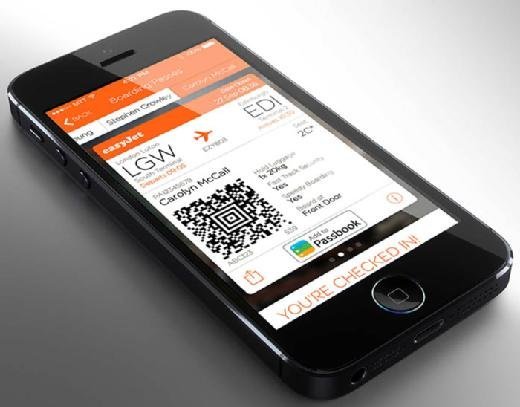
How easyJet uses digital to drive competitive advantage
The CIO and head of digital at easyJet tell Computer Weekly price is not the only way to gain competitive advantage in the airline industry
Low-cost airline easyJet runs a number of operations from its aircraft hangar, an orange beacon near the departures terminal at Luton Airport.
The hangar not only provides an enormous space for engineering teams to check and improve the company’s fleet of aircraft, but also houses the operations of the business, including the IT and digital departments.
Digital and technology-driven initiatives are very important for easyJet. In an interview with Computer Weekly, the airline’s head of digital, James Millet, and its CIO, Chris Brocklesby, explain what initiatives they are putting in place to help give the business a competitive advantage and how both teams work collaboratively to deliver good customer experiences.
“Digital strategy and digital leadership present a differentiator in the marketplace,” explains Millet. “Ease of use for customers, in terms of being able to search for and book flights quickly and clearly at the right price, does differentiate us, and will continue to differentiate us.”
Good customer experience at an attractive price
EasyJet has gone to great effort to ensure its customers are not only drawn in by the price of its flights, but become returning customers because of the experience provided when they travel.
The first port of call for this is mobile. The easyJet team is constantly updating its mobile application to help customers at each stage of their journey.
“We’re trying to make it as easy as possible for customers to interact with us through digital,” says Millet.
Currently, around 12% of boarding passes issued by easyJet are mobile passes, although this can be as high as 50% for some flights. Up to five people can save their booking documents on one mobile device, making it easier for families and small groups to check in and travel together.
The airline is trying to increase the use of mobile among its 67 million customers per year, adding features to cater to their needs.
One capability recently added to the easyJet app is smartphone scanning of passports to make the check-in process easier. It enables a traveller to use the camera on their mobile phone to take a picture of their passport to auto-populate the fields on the check-in form with the correct information.
Other features include real-time updates to inform customers when the gate is open and information on how to navigate airports.
“The fact that we’ve got 67 million people a year flowing through our airports, what we do on the day of travel to make that journey as easy as possible through mobile is a huge opportunity,” says Millet.
“We’re in a fantastic position as a brand because we’ve got all the commercial opportunities, so we’re a £4.5bn e-commerce operation. We can do a lot on mobile to generate revenue and commercial opportunities.”
Digital innovation to make travel easier
When the digital team launched the capability to collect boarding passes through the easyJet mobile application 18 months ago, it noticed around 60% of people were checking in online, with only 40% of people choosing to check in at the airport.
Millet’s team adapted the mobile app to better cater for people using digital means to check in, making the process as easy as possible and thereby aiming to further reduce the number of airport check-ins.

“We’ve taken a process that could involve being in a queue in an airport, that would take a significant amount of time, on to mobile,” says Millet.
“The interim step was that customers had to print a boarding pass at home, but as fewer and fewer people have a printer, this has made the process really quick and easy.”
EasyJet looks at the entire process, from booking to flying, and hones each of the pain points for customers, “focusing energy” on making things easier.
EasyJet hopes to be able to declare missed flights and re-arrange bookings through mobile in the future.
Take advantage of disruptive technologies
Looking into technologies and using them wherever possible is one of easyJet’s advantages in a competitive industry.
Near-field communications (NFC) is one area that needs investment. EasyJet made its Apple Watch application available on the day of the NFC-enabled Apple Watch launch.
EasyJet customers with an Apple Watch can use the application to show their boarding passes, receive notifications about flights and collect weather information. “It doesn’t resonate with everyone, but there it really works for some of our customers,” says Millet.
The organisation also dabbled with streaming service Periscope when it launched, sending videos to customers when problems arose to explain how the situation was being dealt with. “That just felt like a very on-brand thing to do,” says Millet.
In the future, the airline plans to look into how to use data to offer a truly personalised experience. “You have to be very careful, as it has to be relevant and it has to be useful. If you can tick those boxes, that’s great,” he says.
“We’re really tailoring how we communicate with customers, and there will be a lot more of that across all digital channels.”
Guiding travellers through the airport
Gatwick Airport is easyJet’s biggest base. The team has worked collaboratively with the airport to introduce geofencing technologies to interact with the easyJet application and guide travellers through the airport at different stages of their journey.
Airport information is aggregated and delivered to customers through the easyJet application, giving information such as gate or baggage claim information.
“As soon as you land, you get a message saying which baggage belt your bags will be at and you get a map,” explains CIO Brocklesby.
The system is up and running in Geneva, with Edinburgh lined up to go live next. easyJet wants to “integrate and collaborate with the airports” to make each customer’s mobile phone a “travel companion”.
But roll-out will depend on individual airports and their technology, as some are ahead of others. “We’ve had a really good reception from a number of the airports we’ve reached out to, and it’s win-win – it works for them and it works for us,” says Brocklesby.
“We have 140 airports across Europe, and different airports will be at different stages of maturity in the way they can provide that data to us. We’ll work with them to migrate everyone across to it in time, which is really exciting.”
Knowing how the business works
Unlike many other organisations, easyJet has an open-plan office, allowing for a wider understanding and greater communication across all departments.
“My team can never use the excuse that they don’t know how the business works,” says Brocklesby.
The digital and IT teams recently adopted an agile way of working, which is helping the airline attract a lot of IT graduates and talented IT people, because “younger digital natives go wherever the most exciting work is”.
“It’s not just been about delivering transformation for customers, there has been some level of internal transformation in the way we work and in terms of recruiting the right kind of people who can work in that type of environment,” says Brocklesby.
“Our people need to deal with a level of ambiguity and they need to be comfortable with that to be successful.”
Digital innovation to benefit staff
As well as developing customer-facing technologies, easyJet is looking at adapting IT to make processes easier for employees as well, starting with the crew.
“We’re talking about a wireless initiative for colleagues, particularly colleagues who fly – so crew and pilots,” says Brocklesby. “We’ve started at the front of the plane, with initiatives to provide pilots with digital capabilities and remove a lot of paperwork from the flight deck. Then we’re going to be driving into the cabin, providing crew with mobility.”
The airline is looking at reducing the paperwork that needs to be completed for each flight. Instead of staff having to take this back to the crew room to scan or type up after each flight, the airline is looking into capturing this information digitally.
In doing so, the IT and digital teams want to cut out inefficient processes to make the operation as lean as possible – saving even more money.
“At the moment, the cabin manager has to go back to the crew room to finish all the paperwork, whereas in the future we’d like them to finish their job through a digital device and be able to go home rather than having to go back to a crew room to complete their shift,” says Brocklesby. “There’s a whole initiative around digital crew that we’ll move on to next.”
Prioritising change projects
With so many projects and areas to build and improve on, it can be difficult to decide what to work on next.
“You have to be fairly ruthless in your prioritisation. And you have to be open to re-evaluating that prioritisation, because you won’t necessarily have got it right, and you have to make sure you continue to challenge the order of things,” says Brocklesby. “In an organisation that wants to get on and has loads of ideas, that’s one of the things that we constantly do.
“Differentiating through digital is challenging, but it’s about digital delivery and doing more and more and more at a pace quicker than our competitors.”
Read more about digital technology
- Tinder Foundation, the digital inclusion agency, has funded an innovation product allowing libraries to teach community members digital skills.
- There is a need for British businesses to improve their adoption of digital technologies.









